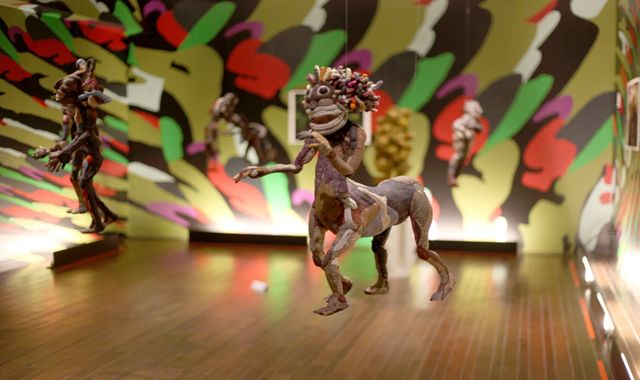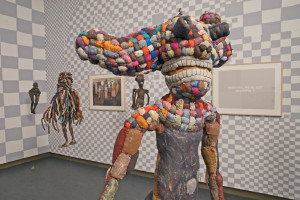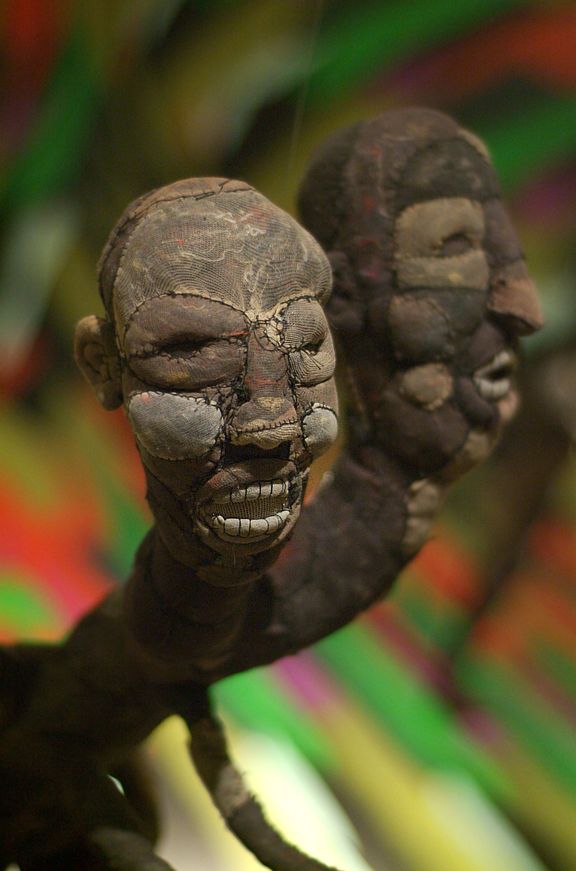
Jérôme Havre is one of the most interesting participants of ‘Confluence’.
Confluence: Shifting Perspectives of the Caribbean
Confluence: Shifting Perspectives of the Caribbean brings together artworks produced by 11 artists with cultural ties to the Caribbean for Scotiabank Caribbean Carnival Toronto. Commissioned as part of Art in Transit, the project will appear on PATTISON Onestop screens from July 25 – August 29, 2014.
Confluence will be presented every 10 minutes on PATTISON Onestop subway platform screens across Toronto and every 5 minutes on shopping mall screens across Canada. In addition select artworks will be presented on 2 PATTISON billboards along the Gardiner Expressway (at Kipling) from July 21 – August 3 bringing the Caribbean Carnival to the daily commuter.
Curated by Pamela Edmonds and Sally Frater of Third Space Art Projects, Confluence: Shifting Perspectives of the Caribbean highlights the work of Nicole Awai, Sandra Brewster, Charles Campbell, Delio Delgado, Polibio Díaz, Zachary Fabri, Jérôme Havre, Karyn Olivier, Sheena Rose, Wayne Salmon, and Natalie Wood.
Drawing inspiration from the geographical term that references the meeting of two or more bodies of water, the artists in Confluence address myriad subjectivities and concerns yet all in some manner or form embody the notion of movement. The artists have roots in Jamaica, Trinidad and Tobago, Barbados, the Dominican Republic, Guyana and Martinique. Responding to the exhibiting platforms of the TTC, malls, and billboards along the Gardiner Expressway, the works in Confluence collectively touch on a range of themes such as hybridity, the performative, migration and transformation, highlighting a notion of a space that is always in flux, refracting and shifting to illuminate new perspectives.
“The opportunity to work with Third Space Art Projects and PATTISON’s Art in Transit is a unique opportunity for the Scotiabank Toronto Caribbean Carnival. Ours is a street festival that takes place in several public spaces, so why not use transit and other spaces to reveal our creativity.” ~ Denise Herrera Jackson, Chief Executive Officer, Festival Management Committee.
A reception for Confluence will take place on Thursday, July 24, 2014 from 6:00pm – 8:00pm at BAND Gallery and Cultural Space located at 1 Lansdowne Avenue, 2nd Floor (Queen St. West/Lansdowne Ave.).
Confluence: Shifting Perspectives of the Caribbean is a co-presentation of PATTISON Onestop and Scotiabank Caribbean Carnival Toronto, and was commissioned as part of PATTISON’s ongoing Art in Transit programme.
For more information about Jérôme Havre read the interview below:
Montreal based Jérôme Havre’s ‘unwoven’ sculptures.
by Céline Piettre, ARTINFO France
12/01/13 7:53 PM EST (abridged version)
Copyright: ARTINFO France/Céline Piettre.
Jérôme Havre, who has lived in Montreal now for a few years, is always willing to take on a new technique or surface. He sews, paints, and sculpts, shifting effortlessly from knitting to multimedia. In his shows, the walls and floors of an exhibition space are charged with multidirectional energy of colors and sounds. This energy is drawn from Havre’s incessant questioning of national and cultural identities, which the artist attempts to “unweave” through his work. He spoke to ARTINFO France recently.
Your family is from Martinique, you were born in France, and you graduated from the École de Beaux-Arts in Paris. Why did you decide to move to Montreal, and how has your work been received in France?
I decided to settle in Québec to find new opportunities. I didn’t want to participate in the pretense and paternalism that often makes up the French environment. Living in France means sometimes observing contradictions between theory and practice, which kept me from developing fully. [Living in Québec] also made it possible to learn about a different political system. Canadian social structures give me time to think, to develop my artistic practice, and to show my work. As for awareness of my work in Europe, it’s only germinating for now. I’ve had rare occasions to show my work there so far.
What is the role of references to non-Western art in your work?
I bring multiple references into my work to shake up people’s bearings. I use non-Western aesthetic criteria, while still maintaining an aesthetic of the beautiful. It is still more comfortable [for people] to circumscribe one’s field of vision to one cultural identity. And because [that practice] is commonly accepted, my work is about revealing the strings of the collective unconscious and the process of accepting a civilizing consensus, which introduces differences with everything that doesn’t correspond to the established model. I use a cultural filter, the vision of an elsewhere that is cultivated and passably reproduced and digested over time, though sometimes I despair that the framework will give way and that the vision will become clairvoyant.
You often use textiles.
I’ve used fiber for reasons inherent to qualities of the subject I’ve treated: skin. Polyamide, for example, is the material most able to sheathe the body like a second skin. While developing my work, I became interested in aspects of textiles as well as the textile industry, and especially in the cultivation of cotton in French colonial history. Cotton became a way for me to learn through a thread transmitting history. In fact, the materials that I use in my artistic work gradually start to “unweave” the national cultural discourse.
Masks and skin are also recurring elements.
Masks and skin are symbols that evoke the complexity of national identities, as well as gender, racial, and religious identities. I was also beginning a dialogue between image and appearance.
In general, your pieces are very visually charged — with color, patterns, and sounds. The space of your shows is very dense.
I appeal to a flood of images and sounds so that the works echo with each other. I want to create both curiosity and a desire to wander in the exhibition space so that the visitor’s mind is constantly engaged.
You seek to immerse the viewer in the work. Why is this essential for you?
The inspiration for immersive spaces comes from amusement parks, such as in hall of mirrors and ghost train rides, which offer sensory and emotional experiences that are different and intense. In a hall of mirrors, the viewer is isolated in a maze with constantly moving, but visible, views of escape. On the other hand, the ghost train offers a fictive danger that one undertakes voluntarily and whose exit is only discovered at the end of the trip. My intention isn’t to impose a point of view but rather to question viewers and lead them to displace their habits through an immersive process.
Issues of migration, racial and social discrimination, and colonization have affected you personally. For you, is all art political?
These issues form the base of my positions as an artist and an individual. We live in societies where our diverse cultures coexist and are connected together. Artists must participate in the “how to live in society” handbook. Their social positions have a fragile balance and lead them to experience social space in a different way. For me, the artistic community remains a network of resisting norms.
When you were interviewed during your last solo show, “Domestiquer,” at Galerie Donald Browne in Montreal, you said that an important concept for you is image as illusion. Could you elaborate on this?
At the time of that show, I was referring to a series of photographs with the reassuring title of “Abri” (“Shelter”), that revealed empty zoo cages covered with plant patterns imitating the natural habitat of the animal species on view. I found these spaces suggestive enough to symbolically show configurations that are intended both to assimilate and to deceive, as in the educational system, which theorizes a determined cultural system.
What did the hybrid figures in that show refer to?
The hybrid figures in the installation “Insula: Réflexions” express a mythology that is both personal and familiar. Their forms symbolize stories, legends, traditions, and beliefs where the human body is made up of different natures.
What leads you to choose one medium over another for a particular project?
Sculpture loses its meaning if it’s not related to what’s around it. Each component of my installations lets another one express an idea. When I’m sewing, I am in partial isolation and the use of different mediums gives me a source to renew my questions. As one can do with multiple identities, I assemble the whole.
What is your relationship to dance?
The movement of bodies in space anticipates my installations. I build the space as if staging a theatrical set. I learn about the location, reflecting on the ways that bodies in movement will take possession of it. As I develop a model of the show’s environment, the presence of the observer becomes obvious. The perception of my work in the space comes is based on assuming the experience that the visitor will have, while both limited in space and totally open to the outside, through the use of basic visual strategies such as intensity of the light and sound effects. I create rudimentary sensory tricks to build intrigue and to create an interaction between the bodies and the artworks.
See more at: http://ca.blouinartinfo.com/contemporary-arts/article/856058-montreal-based-jerome-havres-unwoven-sculptures-come-to-nycs#sthash.eEsUQbHq.dpuf






